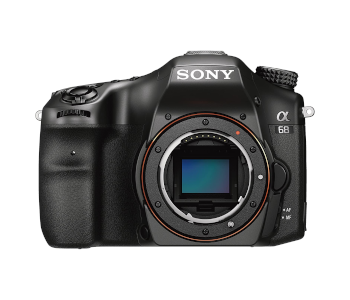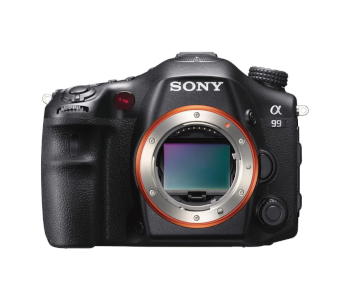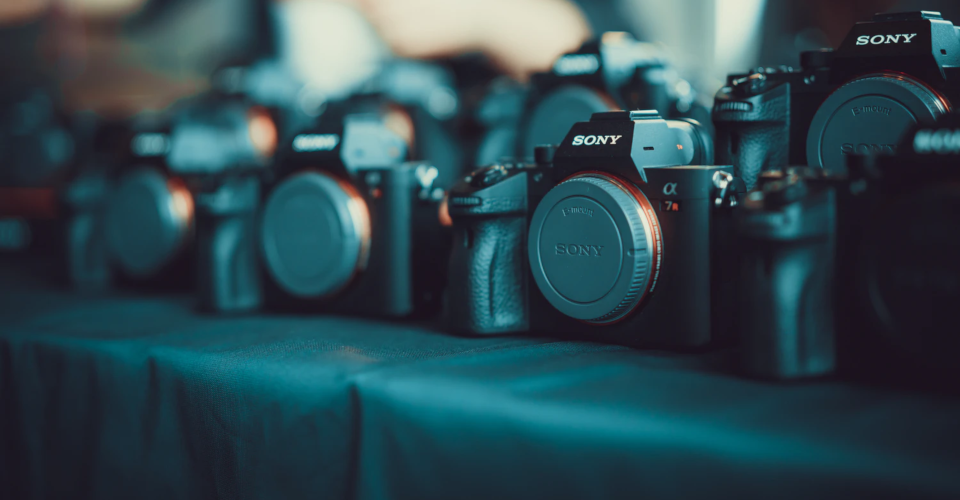Best Sony A-mount Cameras in 2020
Sony’s interchangeable lens cameras come in two types, the A-mount and the E-mount. The genesis of A-mount cameras is way back in 2006 when Sony acquired the photographic business of Konica Minolta. At the time, Sony DSLRs weren’t perceived to be as good as those of powerhouses Canon and Nikon. That resulted in the acquisition of Minolta and the birth of Sony A-mount cameras. The A-mount simply refers to the type of lens mounting system on the body of the camera.
Today, Sony produces cameras with two lens mounting systems. The A-mount system is standard on a Sony Translucent Mirror camera body. The E-mount system is common in the new mirrorless models. The A-mount camera bodies have the benefit of full-time phase-detection autofocus. The A-mount camera uses either full-frame sensors or crop-frame APS-C sensors.
Sony A-mount cameras have model numbers in the form of ILCA-xx, DSLR-Axx, and SLT-Axx. Currently, there are three A-mount camera bodies that are available – the Sony Alpha 68, the Sony Alpha 77, and the Sony Alpha 99. The Sony Alpha 68 and the Sony Alpha 77 are both APS-C crop sensor cameras while the Sony Alpha 99 is the only A-mount full-frame camera body.
| Sony Alpha 68 | Sony Alpha 77 | Sony Alpha 99 | |
|---|---|---|---|
| Model Number | ILCA-68 | ILCA-77M2 | ILCA-99M2 |
| Sensor | APS-C 23.5mm X 15.6mm Exmor CMOS sensor | APS-C 23.5mm X 15.6mm Exmor CMOS sensor | Full-frame 35.9mm x24.0mm Exmor R CMOS sensor |
| Dimensions | 5.61 in X 4.10 in X 3.26 in | 5.61 in X 4.10 in X 3.19 in | 5.62 in X 4.12 in X 3 in |
| Weight | 675 grams | 725 grams | 849 grams |
| Megapixels | 24.2 | 24.3 | 42.4 |
| Screen | 2.7 inch TFT LCD (partially tiltable) | 3 inch TFT LCD (3-way tiltable) | 2.95 inch wide type TFT |
| ISO Range | 100-25600 (still images and movies) expandable to 50 – 102400 | 50-25600 | 100 – 25600 (still images) 100 – 12800 (movies) |
| Autofocus System | 79 points (15 cross-type) | 79 points (15 cross-type) | 399 (79 cross-type) |
| Highest Video Resolution | 1920X1080 (60/50/30/25/24) | 1920 X 1080 (60/24) | 3840 X 2160 (30/25/24) |
| Image Stabilization | None | Enhanced Image Stabilization | 5-axis Image Stabilization |
| Connectivity | USB 2.0 | USB 2.0, Wi-Fi, NFC | USB 2.0, Wi-Fi, NFC, Bluetooth |
| Battery Life | 580 shots | 480 shots | 490 shots (LCD monitor), 390 shots (viewfinder) |
| Price | $599 | $1199 | $3199 |
Sensor
There are two primary sensors used in DSLR cameras – APS-C crop sensor and 35mm full-frame sensor. The sensor is one of the most vital components in a camera and it significantly affects the image quality. Light from a lens passes through and hits the sensor at which point the camera captures the frame that is visible.
The larger sensor can capture a wider frame. So, more of the scene gets captured onto the image. A crop sensor captures a narrower frame. However, just to be clear, a crop sensor isn’t a bad thing. Different photography situations call for different approaches. A crop sensor may give a more focused shot.
The main advantage of working with a full-frame sensor is that you have a wide-enough frame that can give you more freedom in post-production. You can simply cut out the parts that you don’t need. It is one of the reasons why professional and advanced users like to use cameras with a full-frame sensor.
Both the Sony Alpha 68 and the Sony Alpha 77 come with an APS-C crop sensor measuring 23.5mm X 15.6mm. The Sony Alpha 99 is the only Sony A mount camera body currently in production that has a full-frame 35.9mm x24.0mm sensor.
+1 for the Sony Alpha 99
Dimensions and Weight
It seems like we humans have an obsession of making things smaller and lighter – and with good reason too. Who would want to lug around a bulky camera all day long? A compact camera is not only easy to handle, but also easy to store and carry around. A light camera body is easier on the arms, especially if one has to work with the camera for long hours.
The weight and the dimensions of the camera body can be a make or break for some users. For many others, they are important metrics to keep in mind when making a purchase decision. The Sony Alpha 68 measures 5.61 in X 4.10 in X 3.26 in. The Sony Alpha 77 is almost identical with dimensions of 5.61 in X 4.10 in X 3.19 in. The Sony Alpha 99 is surprisingly compact at 5.62 in X 4.12 in X 3 in.
Coming to the weight, the Sony Alpha 68 weighs 675 grams. The Sony Alpha 77 weighs 725 grams, while the Sony Alpha 99 is the heaviest at 849 grams. So, the Sony Alpha 68 is the most portable A mount camera.
+1 for the Sony Alpha 68
Megapixels

Megapixels are a metric that receives, perhaps, the most attention when we talk about camera specifications. Regardless of whether we talk about a camera phone or a DSLR, we want to know how many megapixels the camera packs in. Interestingly, the megapixels metric isn’t as important as it is made out to be. The term megapixel simply refers to the pixels that make up the image. Every picture has small squares of pixels. There are millions of such pixels on each image. The higher the number of pixels, the greater is the level of detail.
If you plan to stretch out your image and print a large poster, having a very high megapixel number isn’t really necessary. Other components like a good sensor and a good autofocus system are factors that play an equally important role in image quality.
The Sony Alpha 68 has 24.2 MP while the Sony Alpha 77 has a slightly higher number of 24.3 MP. The Sony Alpha 99 beats the competition with 42.4 MP.
+1 for the Sony Alpha 99
Screen
The screen of the camera is the visual interface between the user and the camera. It allows the user to adjust the settings as well as view pictures. Another benefit of the camera screen is its role as a viewfinder when framing shots. Most digital cameras either come with a flexible (articulated) screen or a fixed screen. The flexible screen that can be twisted and tilted is obviously more preferable than a fixed screen. The flexible screen is especially critical if the camera is going to be used for vlogging.
The Sony Alpha 68 has a 2.7-inch screen that can tilt 135 degrees up and 55 degrees down. The Sony Alpha 77 has a 3-inch screen that can tilt upwards, downwards, and sideways. It is perfect for vloggers who want to see their own frame while filming. The Sony Alpha 98 also has a 3-axis tiltable screen that can rotate 90 degrees counterclockwise, 180 degrees in the clockwise direction, 134 degrees upward, and 180 degrees downward.
+1 for the Sony Alpha 77
ISO Range

ISO is considered as one of the three pillars of photography. It is a metric for the sensitivity of the image sensor to light. More sensitivity translates to the image getting captured using lesser light. This is important when a fast-moving object is to be shot using a fast shutter speed or when taking pictures in low-light conditions.
However, higher sensitivity can also lead to greater noise. A very high ISO setting can result in grainy images. Every DSLR has a certain ISO range that it offers. The wider the range, the more versatile is the camera because it can be used in different operating environments.
The Sony Alpha 68 offers an ISO range of 100 to 25600. The Sony Alpha 77, on the other hand, offers a range of 50 to 25600. The Sony Alpha 99 has an ISO range of 100 to 25600 and can be expanded to 50 to 102400.
+1 for the Sony Alpha 99
Autofocus
The autofocus system is a vital part of any camera. Out of focus images are no good and it is essential that the camera focus on the subject properly. If the subject is fast-moving, then it adds additional challenges. If you shoot multiple subjects like at a wedding party, then you want the camera to take pictures and then refocus on the next subject in quick time. Therefore, an autofocus system that is powerful, fast, and accurate is necessary.
The autofocus system of a camera consists of autofocus points. There are two types of autofocus points, vertical and cross-type. The more autofocus points, the more powerful is the system. Within autofocus points, cross-type points are more desirable because they are two dimensional. Vertical autofocus points are one-directional. The camera with more cross-type autofocus points is considered to have a better autofocus system.
Both the Soy Alpha 68 and Sony Alpha 77 have 79 autofocus points including 15 cross-type points. The Sony Alpha 99 is way ahead with 399 autofocus points including 79 cross-type points.
+1 for the Sony Alpha 99
Video Resolution

Videos are slowly taking over pictures. With greater bandwidth capacity and internet speeds, the world seems to be moving towards video from 2-dimensional pictures. The rise of YouTube has led to a boom in vlogging as well. So, video recording capability is now an important metric for any camera.
1080p and 4K are two of the most desirable video resolutions currently. 1920X1080 is considered full-HD, while 4K is still in the process of becoming more mainstream. Along with the video resolution, the frame rates are also another important metric. Those who like to use slow-motion video will want a high frame rate.
The Sony Alpha 68 can film 1920X1080 at 60/50/30/25/24 frame rates. The Sony Alpha 77 can film 1920X1080 at 60/24 frame rates. The Sony Alpha 99, meanwhile, can film 4K video (3840 X 2160) at 30/25/24 frame rates.
+1 for the Sony Alpha 99
+1 for the Sony Alpha 68
Image Stabilization
It is really frustrating when your images come out blurry. You know that you have worked hard to get the setting right, wait for the perfect light conditions, and get your angles right only to throw away all the hard work because of a small shake.
Image stabilization prevents distortion and shaky videos. Generally, the stabilization mechanism is digital and works on algorithms. Digital stabilization is very important if you plan to use your DSLR for filming videos.
The Sony Alpha 68 has no image stabilization. The Sony Alpha 77 has an enhanced image stabilization feature that works on a digital algorithm. The Sony Alpha 99 has the most capable image stabilization feature. Its 5-axis optical stabilization is advertised to have the same effect as a shutter speed that is 4.5 times faster.
+1 for the Sony Alpha 99
Connectivity
The world is more connected today and so are the devices. Sharing images on social media, transferring them seamlessly from one device to another, and being able to connect wirelessly are essential features in today’s times. Operating the camera remotely also requires connectivity.
The Sony Alpha 68 is a disappointment on the connectivity front as it has no Wi-Fi or Bluetooth capability. It simply has a USB 2.0 port. The Sony Alpha 77 is a little bit better with Wi-Fi and NFC connectivity. The Sony Alpha 99 is the best when it comes to wireless connectivity options. It is capable of Bluetooth, Wi-Fi, and NFC.
+1 for the Sony Alpha 99
Battery Life
Let’s face it, we all want longer battery life. Whether it is for our smartphone, our smartwatch, or our laptop, we want the battery to last as long as possible. The camera battery is no exception either. Working with the camera for long photoshoots requires a stellar battery life. Traveling, an activity that involves spending long durations without access to a charging port, also demands a long battery life.
One way to make up for short battery life is to carry a spare battery. But, it is always desirable to have a long battery life instead of carrying more accessories. The Sony Alpha 68 has a battery life of 580 shots, by far the most among A mount camera models. The Sony Alpha 77 can take 480 shots on a single charge. The Sony Alpha 99 can take 490 shots when using the LCD monitor and 390 shots when using the viewfinder.
+1 for the Sony Alpha 68
Price
One of the most important considerations in any camera purchase is the price. Every user likes to have the best features possible. But, not everyone is willing/able to pay top dollar for all those features. Most users probably have a budget within which they need to stay. Besides, lenses and other accessories also cost money.
The goal then becomes finding the right balance between features and price. The Sony Alpha 68 is the cheapest A mount model at the moment with a price of around $599. The Sony Alpha 77 costs $1199 while the Sony Alpha 99 costs $3199.
+1 for the Sony Alpha 68
Conclusion
Clearly, the Sony Alpha 99 has the best technical specifications. But, it also costs the most. So, the Sony Alpha 99 isn’t necessarily the best A mount camera model. The best model is the one that suits your purpose. What are your priorities? Do you have a strict budget of $500 to $600? Are you someone who wants a full-frame camera and aren’t limited by budgeting constraints? Is vlogging going to be your primary activity?
When you answer such questions, you will know right away which camera model is the best fit for your needs. We hope this guide will help you evaluate your needs with the features offered by each Sony A mount camera model. Good luck!

